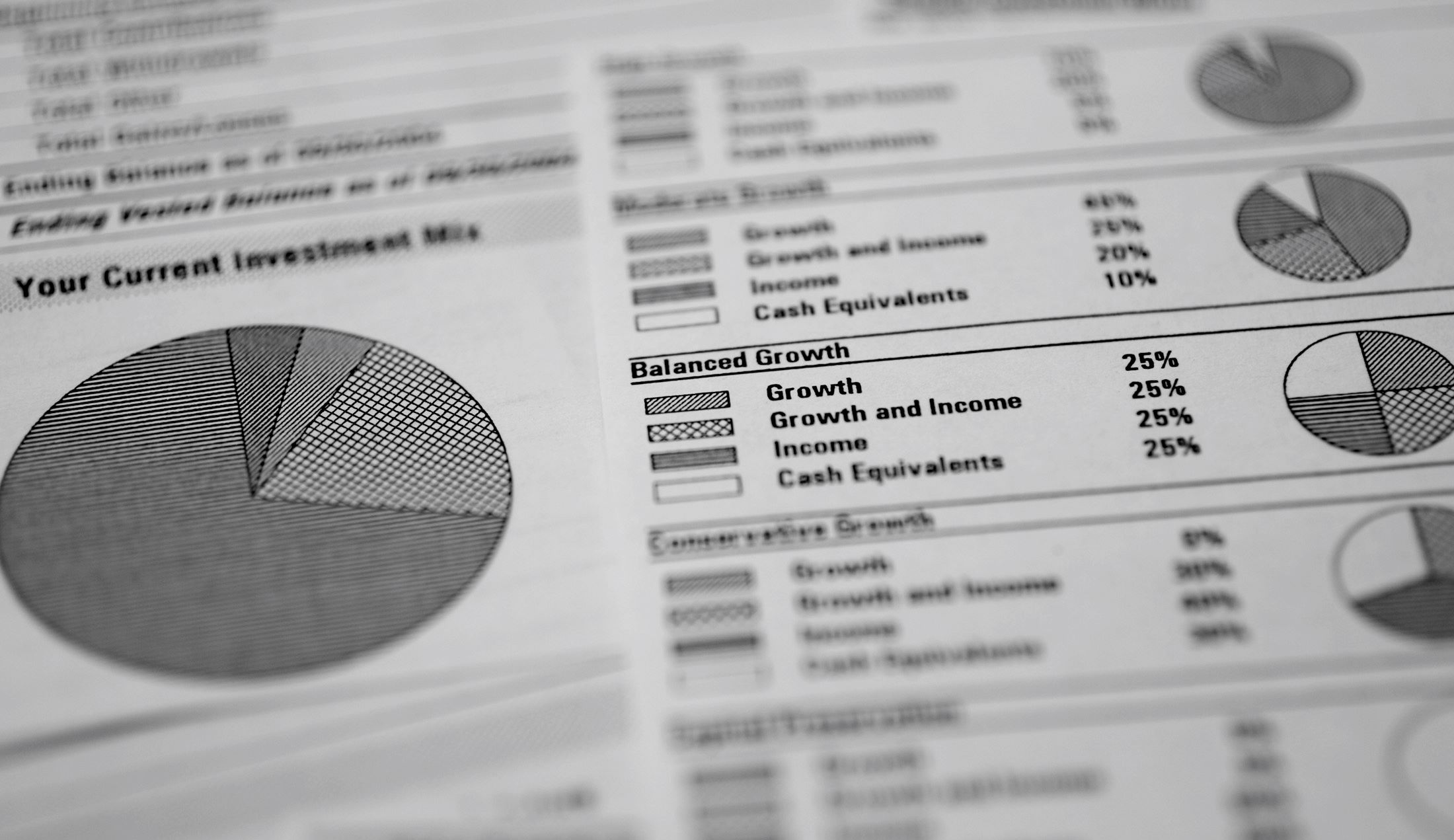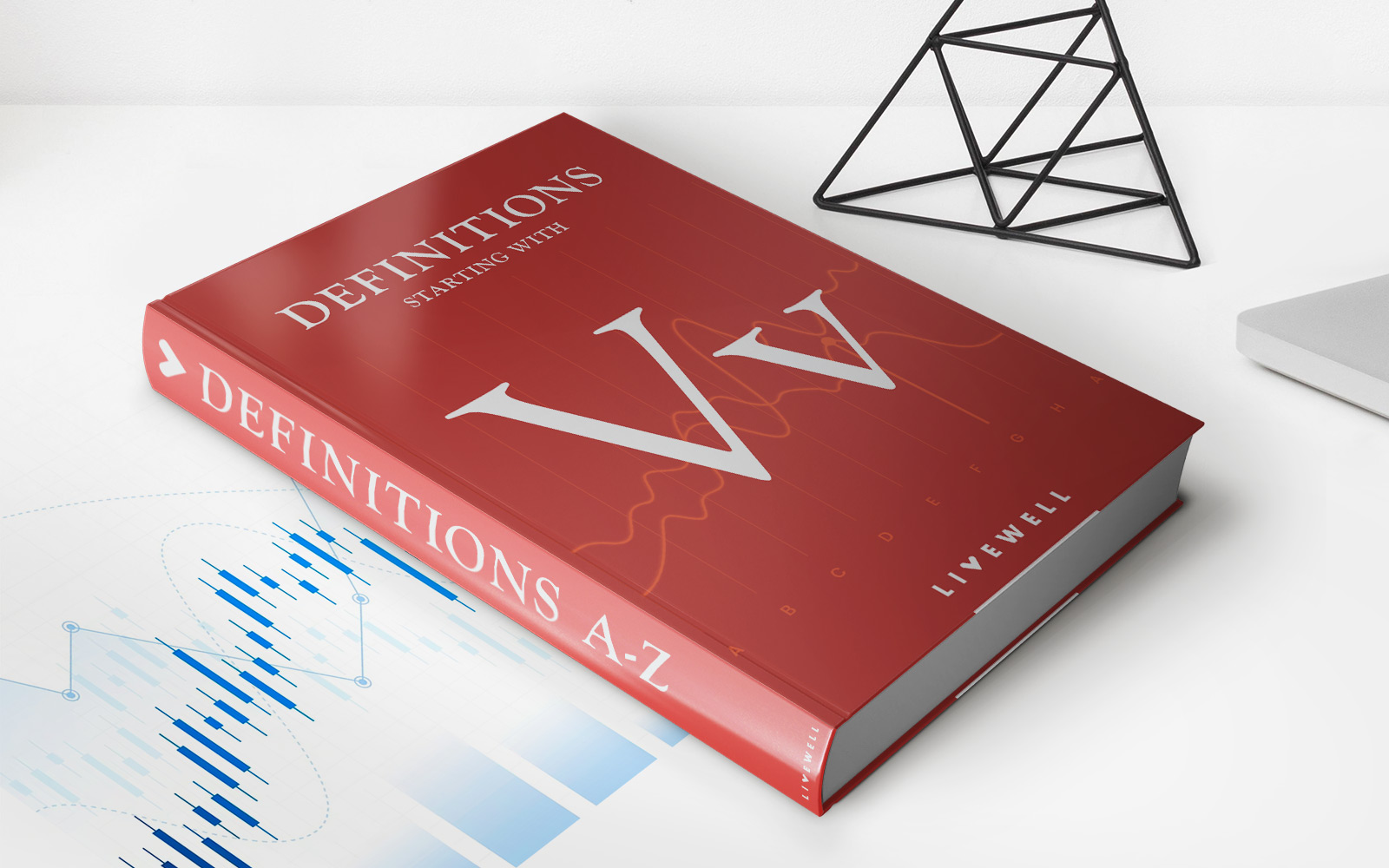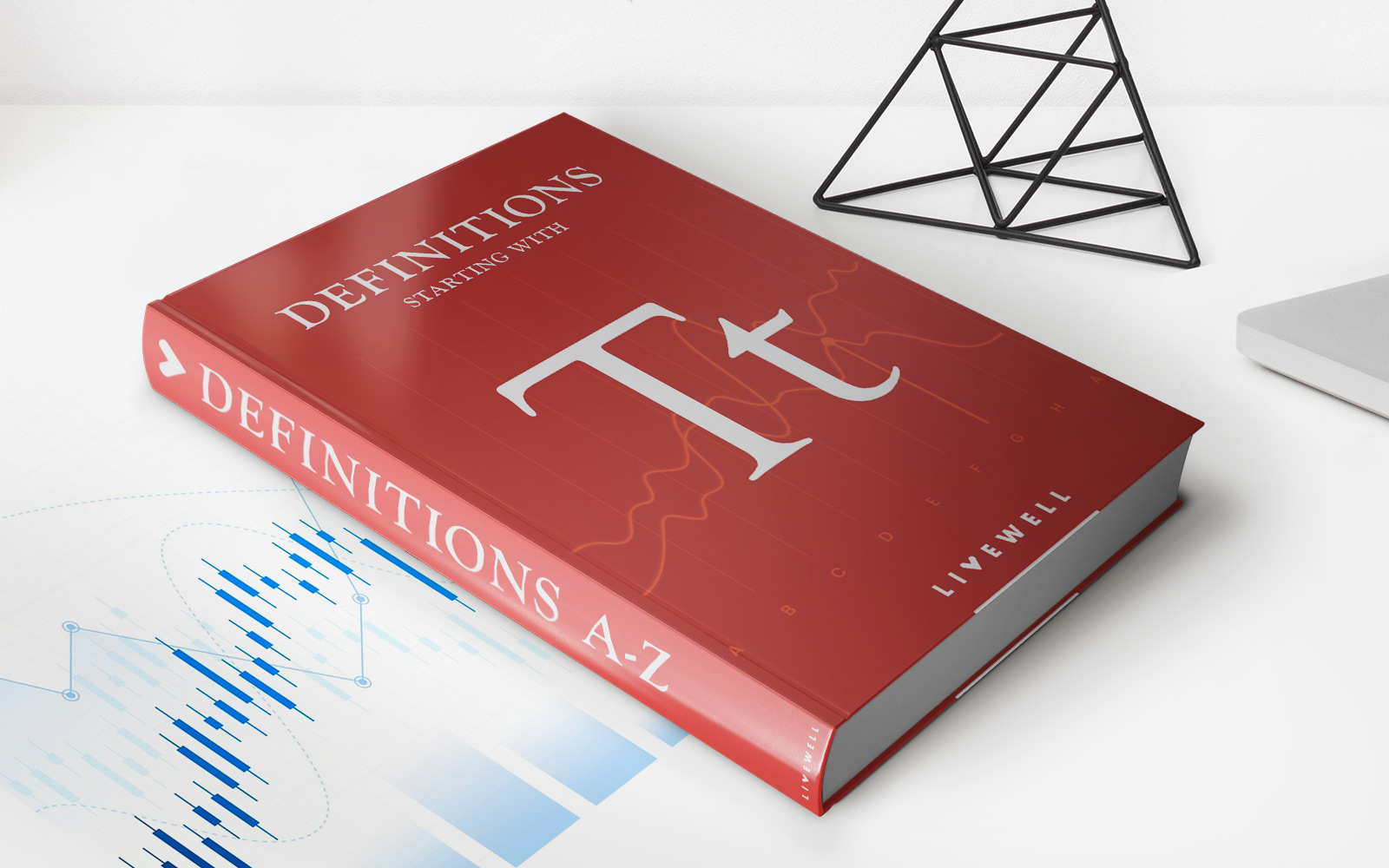

Finance
How To Manage Your 401K
Modified: February 21, 2024
Learn valuable tips on how to effectively manage your 401K and secure your financial future with our comprehensive finance guide.
(Many of the links in this article redirect to a specific reviewed product. Your purchase of these products through affiliate links helps to generate commission for LiveWell, at no extra cost. Learn more)
Table of Contents
- Introduction
- Understanding Your 401K
- Setting Up Your 401K
- Contribution Limits
- Investment Options
- Employer Matching
- Vesting
- Managing Your 401K
- Monitoring Performance
- Rebalancing Your Portfolio
- Tax Considerations
- Taking Distributions
- Retirement Planning with Your 401K
- Maximizing Your 401K
- Frequently Asked Questions (FAQs)
- Conclusion
Introduction
Welcome to the world of 401Ks, where you have the opportunity to take control of your financial future and secure a comfortable retirement. If you’re new to the concept of a 401K, don’t worry – this article will walk you through the basics and provide you with the knowledge to effectively manage your retirement savings.
A 401K is a retirement savings plan sponsored by employers that allows employees to contribute a portion of their wages on a pre-tax basis. These contributions, along with any employer matching, grow tax-deferred until you begin taking distributions after reaching the age of 59½. This means that your contributions and any growth are not subject to income tax until you withdraw them in retirement.
One of the key advantages of a 401K is the ability to leverage employer matching contributions. Many employers offer a matching contribution up to a certain percentage of your salary, which is essentially free money. It’s important to take advantage of this opportunity as it can significantly boost your retirement savings over time.
Managing your 401K effectively involves understanding the rules and options available to you, making informed investment choices, and regularly monitoring your portfolio’s performance. This article will guide you through each of these steps, offering practical advice and tips to help you maximize the growth potential of your 401K.
Whether you’re just starting your career or nearing retirement, it’s never too early or too late to take control of your financial future. By taking the time to learn about your 401K and implementing the strategies outlined in this article, you’ll be well on your way to building a solid foundation for your retirement years.
Understanding Your 401K
Before diving into the details of managing your 401K, it’s crucial to have a solid understanding of how this retirement savings plan works. Let’s explore the key components of a 401K:
- Contributions: As an employee, you have the option to contribute a portion of your pre-tax income to your 401K. The maximum annual contribution limit is set by the IRS, and for 2021 it is $19,500 for individuals under the age of 50. If you’re 50 or older, you can make an additional catch-up contribution of $6,500, bringing the total limit to $26,000.
- Employer Matching: Many employers offer a matching contribution as an incentive to encourage employees to participate in the company’s 401K plan. For example, let’s say your employer offers a 50% match for up to 6% of your salary. This means if you contribute 6% of your salary, your employer will match it with an additional 3%, effectively giving you a 9% total contribution.
- Vesting: Vesting refers to the ownership of employer contributions to your 401K. While your contributions are always 100% vested, employer contributions may have a vesting schedule. This means you may need to work for a certain number of years before you are entitled to the full amount of your employer’s contributions. It’s essential to understand your vesting schedule to avoid any surprises when you leave your job.
- Investment Options: Your 401K plan will offer a range of investment options for you to choose from. These options typically include mutual funds, target-date funds, index funds, and possibly company stock. It’s important to carefully evaluate your options and consider your risk tolerance, time horizon, and investment goals when making investment selections.
- Tax Benefits: One of the significant advantages of a 401K is the tax benefits it offers. Your contributions are made on a pre-tax basis, which means they are deducted from your taxable income, potentially reducing your tax liability. Additionally, any income and capital gains generated within your 401K are not subject to tax until you withdraw the funds in retirement.
By understanding the fundamental aspects of your 401K, you’ll be better equipped to make informed decisions and effectively manage your retirement savings. The next step is to set up your 401K and start contributing to secure your financial future.
Setting Up Your 401K
Setting up your 401K is the first step towards building a secure retirement. Here’s what you need to know:
- Enrollment: If you’re a new employee, your employer will provide you with the necessary paperwork and information to enroll in the company’s 401K plan. Pay close attention to any enrollment deadlines and make sure to review all the plan details provided.
- Contribution Percentage: Determine the percentage of your pre-tax income that you would like to contribute to your 401K. While the maximum annual contribution limit is set by the IRS, you can choose to contribute a lower percentage if desired. However, it’s generally recommended to contribute at least enough to take full advantage of any employer matching contributions.
- Investment Options: Review the investment options available within your 401K plan. Take the time to understand the risk and return characteristics of each option and consider diversifying your investments. Choosing a well-balanced portfolio that aligns with your risk tolerance and investment goals is crucial for long-term growth.
- Beneficiary Designation: Designate one or more beneficiaries for your 401K account. These beneficiaries will inherit your 401K assets in the event of your passing. It’s essential to regularly review and update your beneficiary designations to ensure they reflect your current wishes.
- Automatic Contributions: Many 401K plans offer the option to set up automatic contributions. With this feature, a predetermined amount will be deducted from your paycheck and contributed to your 401K on a regular basis. Automatic contributions help ensure consistent savings and can be an effective strategy for accumulating wealth over time.
- Review Plan Documents: Take the time to carefully review all the plan documents provided by your employer. This includes the plan’s summary, fee disclosure, and any other related materials. Understanding the plan’s rules, fees, and investment options will enable you to make informed decisions and effectively manage your 401K.
Once you have set up your 401K, consider setting a reminder to periodically review and adjust your contribution percentage, investment allocations, and beneficiary designations. Life circumstances and financial goals may change, so it’s important to ensure your 401K remains aligned with your needs.
Remember, your 401K is a long-term investment vehicle designed to provide for your retirement years. By setting it up properly and making consistent contributions, you’ll be on your way to building a substantial nest egg for a financially secure future.
Contribution Limits
Understanding the contribution limits of your 401K is crucial for maximizing your retirement savings. Here’s what you need to know:
The IRS sets annual contribution limits for 401K plans to ensure fairness and to encourage individuals to save for retirement. For the year 2021, the maximum annual contribution limit is $19,500 for individuals under the age of 50. If you’re 50 or older, you have the option to make catch-up contributions, allowing you to contribute an additional $6,500, bringing your total limit to $26,000.
It’s important to note that these limits apply to your pre-tax contributions. Employer matching contributions do not count towards these limits. However, there are overall contribution limits that take into account both employee and employer contributions. For 2021, the total limit is $58,000, including both employee and employer contributions.
Contributing the maximum amount to your 401K allows you to take full advantage of the tax benefits and potential growth of your retirement savings. However, it’s essential to consider your own financial situation and budget constraints. If contributing the maximum is not feasible for you, aim to contribute at least enough to receive the full employer matching contribution, if offered by your employer.
It’s also worth noting that contribution limits are subject to change each year. It’s a good practice to stay informed about any updates or changes to the limits to ensure you’re maximizing your contributions effectively.
Another aspect to consider is the timing of your contributions. You have the option to make contributions throughout the year, either on a per-paycheck basis or in lump sums. Spreading your contributions evenly throughout the year can help take advantage of dollar-cost averaging, which can smooth out the impact of market fluctuations on your investments.
Keep in mind that if you reach the annual contribution limit before the end of the year, you will no longer be able to make pre-tax contributions. However, employer matching contributions and any after-tax contributions may continue, up to the overall limit.
By understanding and maximizing the contribution limits of your 401K, you can build a substantial retirement fund and take advantage of the long-term tax benefits and growth potential of your investments. Consult with a financial advisor to determine the optimal contribution strategy based on your specific circumstances and goals.
Investment Options
When it comes to managing your 401K, one of the essential aspects to consider is the investment options available to you. The investment options within your 401K plan will determine how your contributions are allocated and can have a significant impact on the growth of your retirement savings. Here are the key points to consider:
Mutual Funds: Many 401K plans offer a variety of mutual funds. These funds pool money from multiple investors to invest in a diversified portfolio of stocks, bonds, or a combination of both. Mutual funds offer varying degrees of risk and return potential, so it’s essential to understand the fund’s investment objectives, past performance, expense ratio, and any associated fees before making your investment decisions.
Target-Date Funds: Target-date funds are designed to automatically adjust the asset allocation over time based on your expected retirement year. These funds gradually shift from higher-risk investments to more conservative ones as your retirement date approaches. Target-date funds can be a convenient option for those who prefer a hands-off approach to investing.
Index Funds: Index funds aim to replicate the performance of a specific market index, such as the S&P 500. These funds provide broad market exposure and typically have lower expense ratios compared to actively managed funds. Index funds can be an excellent choice for investors seeking diversification and long-term growth at a lower cost.
Company Stock: Some 401K plans may offer the option to invest in the employer’s company stock. While this may seem like an appealing opportunity, it’s essential to exercise caution and avoid overconcentration in a single investment. Diversifying your portfolio across different asset classes is generally recommended to manage risk effectively.
Asset Allocation: The asset allocation refers to how you divide your investments among different asset classes, such as stocks, bonds, and cash equivalents. The appropriate asset allocation depends on factors such as your risk tolerance, investment timeline, and financial goals. Consider diversifying your portfolio across different asset classes to help manage risk and potentially maximize returns.
When selecting your investment options, it’s crucial to thoroughly research and understand each choice. Consider consulting with a financial advisor who can provide guidance and help you build a well-rounded portfolio tailored to your specific needs.
It’s also important to regularly review and rebalance your portfolio. Market fluctuations can cause your asset allocation to drift away from your desired targets. Rebalancing involves adjusting your investments to bring them back in line with your target asset allocation. This helps ensure that your portfolio remains aligned with your investment goals and risk tolerance.
Remember, investing involves risk, including the potential loss of principal. It’s important to carefully analyze each investment option, consider your risk tolerance, and diversify your portfolio to manage risk effectively. By making informed investment choices within your 401K, you can work towards building a solid foundation for your retirement future.
Employer Matching
One of the greatest benefits of participating in a 401K plan is the opportunity to receive employer matching contributions. Employer matching is essentially free money that can significantly boost your retirement savings. Here’s what you need to know about employer matching:
Employer matching contributions are contributions made by your employer to your 401K account based on your own contributions. The specific matching formula varies by employer, but a common example would be a 50% match for up to 6% of your salary. This means if you contribute 6% of your salary to your 401K, your employer will match it with an additional 3%.
When considering employer matching, it’s important to contribute at least enough to receive the full match. Failing to do so means you’re leaving free money on the table. Employer matching is a powerful tool for accelerating your retirement savings, as it instantly boosts your contributions without any additional effort on your part.
Keep in mind that there may be a vesting period associated with employer matching contributions. Vesting refers to the ownership of these contributions. While your own contributions are always 100% vested, employer contributions may have a vesting schedule. This means you may need to work for a certain number of years before you are entitled to the full amount of your employer’s contributions. Be sure to understand your vesting schedule and factor it into your retirement planning.
It’s worth noting that employer matching contributions are typically subject to an annual maximum limit. This limit ensures that employers are not excessively contributing to highly compensated employees at the expense of other employees. It’s important to be aware of this limit to ensure you receive the maximum matching benefit available to you.
If you have the financial means to contribute above the matching threshold, it may still be beneficial to do so. Contributions above the matching percentage can further boost your retirement savings and take advantage of the tax benefits of a 401K. However, it’s essential to consider your overall financial situation and other financial goals before increasing your contributions.
Remember, employer matching is a valuable opportunity to accelerate your retirement savings. Take full advantage of this benefit by contributing at least enough to receive the full matching contribution. This will put you on the path to building a more secure financial future.
Vesting
When it comes to your 401K, understanding the concept of vesting is crucial. Vesting refers to the ownership of employer contributions made to your retirement account. Here’s what you need to know about vesting:
While your own contributions to your 401K are always 100% vested, employer contributions may have a vesting schedule. A vesting schedule determines how long you need to work for the employer before you fully own the employer’s contributions.
Typically, a vesting schedule is based on years of service. For example, a common vesting schedule is 25% per year, meaning you become entitled to 25% of your employer’s contributions for each year of service. After four years, you would be fully vested and own 100% of your employer’s contributions.
It’s important to keep in mind that if you leave your job before you are fully vested, you may forfeit a portion of your employer’s contributions. The amount of forfeited contributions depends on your specific vesting schedule and the length of your employment.
Understanding your vesting schedule is crucial for effective retirement planning. If you anticipate changing jobs in the future, it’s important to consider how your vesting schedule may impact your retirement savings. For example, if you’re planning to leave your job before becoming fully vested, you may need to adjust your retirement contribution strategy accordingly.
It’s worth noting that your own contributions to your 401K are always fully vested, regardless of your employment status. This means that any contributions you make to your 401K are yours to keep, even if you change jobs or leave the company.
When reviewing your 401K plan, carefully review the vesting schedule provided by your employer. Understanding the specific rules and timeframes will help you make informed decisions about your retirement savings. If you have questions or need clarification, don’t hesitate to reach out to your 401K plan administrator or HR department.
By understanding vesting and its impact on your retirement savings, you can effectively plan for your financial future and make informed decisions regarding your 401K contributions and employment choices.
Managing Your 401K
Properly managing your 401K is essential for maximizing the growth potential of your retirement savings. Here are key strategies to consider for effective 401K management:
Monitoring Performance: Regularly monitor the performance of your 401K investments. Keep an eye on the performance of your chosen funds and evaluate whether they align with your investment goals. Reviewing performance can help you identify underperforming funds and take appropriate action to optimize your portfolio.
Rebalancing Your Portfolio: Over time, the value of different investments within your portfolio may fluctuate, causing your asset allocation to deviate from your original targets. Rebalancing involves adjusting your investments to bring them back in line with your desired asset allocation. Regularly review and rebalance your portfolio to help manage risk and ensure that your investments align with your investment goals.
Tax Considerations: Understand the tax implications of your 401K withdrawals. Contributions to a traditional 401K are made on a pre-tax basis, meaning they are deducted from your taxable income. However, withdrawals in retirement are subject to income tax. Consider consulting with a tax professional to understand how your 401K distributions will be taxed and plan accordingly.
Taking Distributions: Familiarize yourself with the rules and regulations regarding 401K distributions. While the general age for penalty-free withdrawals is 59½, there are exceptions and guidelines for early withdrawals. Be aware of the penalties and tax consequences associated with early withdrawals and plan your retirement income strategy accordingly.
Retirement Planning with Your 401K: Your 401K is a crucial tool for funding your retirement. Consider working with a financial advisor or retirement planner to integrate your 401K into a comprehensive retirement plan. Factors such as anticipated expenses, desired lifestyle, and other income sources should all be taken into account when creating a retirement strategy that utilizes your 401K effectively.
Maximizing Your 401K: If your financial circumstances allow, aim to contribute the maximum allowable amount to your 401K. By contributing the maximum, you can fully take advantage of the tax benefits and potential growth of your retirement savings. However, contribute an amount that aligns with your overall financial situation and budget.
Managing your 401K requires regular attention and informed decision-making. Stay informed about changes to your plan, review your investment options, and reassess your contributions regularly to ensure you are on track to meet your retirement goals. By actively managing your 401K, you can work toward building a secure financial future for your retirement years.
Monitoring Performance
Regularly monitoring the performance of your 401K investments is a crucial part of effectively managing your retirement savings. Here’s why monitoring performance is important and how to do it:
Evaluating Fund Performance: One of the main reasons for monitoring performance is to evaluate the performance of the funds within your 401K. Each fund will have its own track record and goals, and it’s essential to ensure that they align with your investment objectives. Regularly assessing fund performance allows you to identify any underperforming funds that may require adjustment or reevaluation.
Identifying Underperforming Funds: By monitoring the performance of your funds, you can identify those that are consistently underperforming and not meeting your expectations. This could be due to changes in market conditions or shifts in the fund’s strategy. Identifying underperforming funds enables you to take appropriate action, such as reallocating your investments to better-performing options or considering alternative investment choices.
Reviewing Expense Ratios: Another aspect to consider when monitoring performance is the expense ratios of your funds. Expense ratios represent the annual costs associated with managing the fund and are deducted from your investment returns. It’s important to ensure that the expense ratios are reasonable and justify the value provided by the fund. High expense ratios can eat into your overall returns over time, so periodically reviewing them is prudent.
Reevaluating Asset Allocation: Market conditions and personal circumstances can impact the ideal asset allocation for your retirement investments. By monitoring performance, you can assess whether your current asset allocation is in line with your risk tolerance and goals. If your investments are consistently underperforming or the market landscape has changed significantly, it may be worth considering adjustments to your asset allocation.
Tracking Market Conditions: Keeping an eye on market conditions is an essential part of performance monitoring. Understanding the broader economic climate, trends, and shifts in market sectors can help you make more informed decisions about your investment strategies. Stay updated on market news, economic indicators, and any significant events that may impact your investments.
Seeking Professional Advice: If you’re unsure about how to analyze and interpret the performance data, consider seeking the advice of a financial advisor. A professional can help you analyze your investment performance, provide insights, and guide you in making well-informed decisions based on your specific financial goals and risk tolerance.
Remember that short-term market fluctuations are normal, and it’s crucial to focus on the long-term performance and trajectory of your investments. Monitoring performance regularly allows you to stay informed, make necessary adjustments, and ensure that your retirement savings are on track to meet your financial goals.
Rebalancing Your Portfolio
Rebalancing your portfolio is an essential task in managing your 401K and maintaining an optimal asset allocation. As market conditions change, the value of different investments within your portfolio may fluctuate, causing your asset allocation to deviate from your desired targets. Rebalancing involves adjusting your investments to bring them back in line with your original asset allocation. Here’s why rebalancing is important and how to approach it:
Why Rebalance?
Rebalancing your portfolio helps to manage risk and keep your investments aligned with your long-term goals. Here are a few key reasons why rebalancing is important:
1. Preserving Asset Allocation: Over time, the value of different investments will change, causing your asset allocation to drift away from your desired targets. Rebalancing ensures that your portfolio maintains a consistent asset allocation, preventing it from becoming too heavily weighted in certain investments.
2. Managing Risk: Different asset classes have varying risk and return characteristics. Rebalancing helps manage risk by periodically selling assets that have appreciated in value and reallocating those funds to assets that may be underperforming. This allows you to potentially take profits from successful investments and reinvest in areas with more growth potential.
3. Seizing Opportunities: Rebalancing also enables you to take advantage of investment opportunities that arise. As market conditions change, new investment options may become more attractive. By rebalancing, you can allocate funds to these opportunities and position your portfolio for potential growth.
How to Rebalance:
Rebalancing your portfolio can be done manually or with the assistance of a financial advisor or automated tools. Here are several steps to consider when rebalancing:
1. Review Your Portfolio: Assess the current asset allocation of your portfolio and compare it to your desired targets. Determine how much drift has occurred and which specific assets need adjustment.
2. Set Rebalancing Thresholds: Determine the threshold at which you will trigger a rebalance. Some investors choose a specific percentage deviation from their target allocation, such as 5% or 10%. Others may prefer to rebalance on an annual or semi-annual basis.
3. Consider Tax Implications: Rebalancing may have tax implications, especially if you hold investments in taxable accounts. Consult with a tax professional to understand potential capital gains or losses and to evaluate the most tax-efficient approach.
4. Execute Trades: Once you have determined the necessary adjustments, execute the trades to realign your asset allocation. This may involve selling some investments and buying others to achieve your desired mix.
5. Monitor and Repeat: Regularly monitor the performance of your portfolio and repeat the rebalancing process as necessary. Remember that rebalancing should be an ongoing process to keep your portfolio in line with your long-term goals.
Rebalancing your portfolio is a proactive step towards maintaining a well-diversified and disciplined investment strategy. By periodically reviewing and adjusting your asset allocation, you can potentially maximize long-term returns while effectively managing risk.
Tax Considerations
When it comes to managing your 401K, understanding the tax implications is crucial. Making informed decisions regarding your contributions and distributions can have a significant impact on your overall tax liability. Here are key tax considerations to keep in mind:
Pre-Tax Contributions: One of the primary benefits of a traditional 401K is the ability to make pre-tax contributions. This means that the amount you contribute to your 401K is deducted from your taxable income, potentially lowering your current tax liability. Take advantage of this opportunity by contributing as much as you can afford, up to the annual contribution limit.
Tax-Deferred Growth: Another tax advantage of a traditional 401K is that your contributions and any growth within the account are not subject to taxes until you withdraw the funds in retirement. This tax-deferred growth allows your investments to potentially compound over time, boosting your retirement savings compared to taxable investment accounts.
Roth 401K Contributions: Some employers offer a Roth 401K option, which allows you to make after-tax contributions to your retirement account. Although your contributions to a Roth 401K are not tax-deductible, qualified distributions in retirement are tax-free. Consider whether a Roth 401K makes sense for your tax situation, future tax expectations, and retirement goals.
Tax Treatment of Withdrawals: When you start taking distributions from your 401K in retirement, the withdrawals are generally subject to income tax. The amount withdrawn is considered taxable income for the year in which you receive it. It’s important to plan for these tax implications and factor them into your overall retirement income strategy.
Early Withdrawal Penalties: Withdrawing funds from your 401K before reaching age 59½ may result in early withdrawal penalties. In addition to ordinary income tax, you may be subject to a 10% early withdrawal penalty unless you qualify for an exception, such as a financial hardship or disability. Carefully consider the tax consequences and penalties before accessing your retirement savings prematurely.
Rollovers and Transfers: If you change jobs or leave your current employer, you may have the option to roll over your 401K funds into another qualified retirement account, such as an individual retirement account (IRA). When executing a rollover or transfer, ensure that it is done correctly to avoid any tax implications or penalties.
Consult with a Tax Advisor: Tax laws can be complex and subject to change. To ensure you fully understand the tax considerations related to your 401K, it’s advisable to consult with a qualified tax advisor or financial planner who can provide personalized guidance based on your specific circumstances and goals.
Understanding the tax implications of your 401K can help you make informed decisions, maximize your savings, and effectively plan for retirement. By taking advantage of the tax benefits offered by your 401K and staying informed about tax regulations, you can potentially optimize your tax situation and enhance your overall financial well-being.
Taking Distributions
When it comes time to retire, your 401K becomes a valuable source of income. Understanding the rules and options for taking distributions is crucial to ensure you make the most of your retirement savings. Here are key points to consider when taking distributions from your 401K:
Required Minimum Distributions (RMDs): Once you reach age 72 (or 70½ if you were born before July 1, 1949), you are generally required to start taking annual distributions from your traditional 401K. These mandatory withdrawals are known as Required Minimum Distributions (RMDs) and are calculated based on your account balance and life expectancy.
Early Withdrawals: If you plan to retire before reaching age 59½, taking early withdrawals from your 401K may subject you to a 10% early withdrawal penalty in addition to ordinary income taxes. However, there are exceptions to the early withdrawal penalty, such as financial hardship, disability, or a series of substantially equal periodic payments known as 72(t) distributions. Consult with a tax advisor to determine if any exceptions apply in your situation.
Traditional vs. Roth 401K: If you have a Roth 401K, distributions from a qualified Roth account in retirement are generally tax-free. Unlike traditional 401K plans, Roth 401K plans do not require RMDs during your lifetime. An important advantage of Roth 401K distributions is that they do not count as taxable income and may provide greater flexibility in managing your tax liability in retirement.
Timing and Frequency: You have flexibility in deciding how and when to take distributions from your 401K. You can choose to take a lump sum, periodic payments, or systematic withdrawals. Consider your cash flow needs, tax implications, and retirement income goals when determining the timing and frequency of your distributions.
Rollovers and Transfers: If you change jobs or leave your current employer, you may have the option to roll over your 401K funds into another qualified retirement account, such as an individual retirement account (IRA). Rollovers allow you to maintain the tax-deferred status of your retirement savings and potentially provide more control over investment choices and distribution strategies.
Tax Implications: Distributions from a traditional 401K are generally subject to income tax. It’s important to plan for the tax implications of your distributions and factor them into your overall retirement income strategy. Consult with a tax advisor or financial planner to understand the specific tax consequences based on your individual circumstances.
As retirement approaches, it’s essential to educate yourself about the rules and options for taking distributions from your 401K. Consider consulting with a financial advisor or retirement planner who can help you create a retirement income strategy that aligns with your goals, tax situation, and financial needs.
Remember, your 401K is a valuable asset that has been accumulating over your working years. Taking distributions in a tax-efficient manner and in line with your retirement goals can help ensure that your retirement savings last throughout your golden years.
Retirement Planning with Your 401K
Your 401K is a critical component of your retirement planning. It can serve as a powerful tool for building a secure financial future. Here’s how to incorporate your 401K into your retirement strategy:
Estimate Your Retirement Needs: Start by evaluating your desired retirement lifestyle and estimating the income you will need to support it. Take into account your anticipated expenses, including living costs, healthcare, travel, and any other specific goals or aspirations you have for your retirement years.
Review Your 401K Contributions: Assess your current contributions to your 401K and determine if they align with your retirement goals. Consider increasing your contributions if you have the financial capacity to do so. Maximize your contributions up to the annual limit to take full advantage of the tax benefits and potential growth of your retirement savings.
Assess Investment Performance: Regularly review the performance of your 401K investments. Evaluate the growth of your portfolio and ensure that it aligns with your long-term financial goals and risk tolerance. Consider adjusting your investment strategy, if necessary, to optimize your returns and manage risk.
Coordinate with Other Retirement Accounts: If you have other retirement accounts, such as an Individual Retirement Account (IRA) or a pension plan, integrate your 401K contributions and withdrawals with these accounts. Coordinate your investment allocations and distribution strategies across all your retirement assets to achieve a well-diversified and tax-efficient retirement income plan.
Plan for Required Minimum Distributions (RMDs): Once you reach age 72, you are generally required to start taking RMDs from your traditional 401K. Understand the rules and calculate your required distributions to ensure you satisfy the IRS requirements and avoid penalties. Consider incorporating the RMDs into your overall retirement income plan.
Consider Roth Conversions: Evaluate the potential benefits of converting a portion of your traditional 401K to a Roth 401K or Roth IRA. Roth conversions can provide tax-free income in retirement and greater flexibility in managing your tax liability. However, carefully assess the tax consequences and consult with a tax advisor before proceeding with a conversion.
Regularly Review and Update: Keep your retirement plan and 401K contributions under regular review. As your circumstances change, reassess your retirement goals and make necessary adjustments to your strategy. Consider meeting with a financial advisor to ensure your plan remains on track and aligned with your evolving needs.
Seek Professional Guidance: Retirement planning can be complex, and seeking professional guidance can provide valuable insights and expertise. Consider consulting with a financial advisor or retirement planner who can help you navigate the complexities of retirement planning and optimize the use of your 401K.
Remember, your 401K is a powerful tool for building your nest egg, but it’s just one piece of the retirement puzzle. Integrating your 401K contributions and withdrawals with a comprehensive retirement strategy can help you achieve your retirement goals and enjoy a financially secure future.
Maximizing Your 401K
Maximizing your 401K contributions is a key step towards building a substantial retirement nest egg. By taking advantage of the various benefits and opportunities offered by your 401K plan, you can enhance your long-term financial security. Here’s how to make the most of your 401K:
Contribute up to the Maximum: Aim to contribute the maximum allowed by the IRS to your 401K each year. For 2021, the contribution limit is $19,500 for individuals under the age of 50. If you’re 50 or older, you can make an additional catch-up contribution of $6,500. Contributing the maximum amount allows you to maximize the tax advantages and growth potential of your retirement savings.
Take Advantage of Employer Matching: If your employer offers a matching contribution, make sure to contribute enough to receive the full match. Employer matching is essentially free money that can significantly boost your retirement savings over time. By not taking advantage of this benefit, you’re leaving valuable dollars on the table.
Review and Adjust Your Investment Allocations: Regularly review the investment options available within your 401K and assess their performance and suitability for your goals. Consider diversifying your portfolio to manage risk and maximize potential returns. Adjust your investment allocations as necessary to ensure they align with your risk tolerance and long-term objectives.
Rebalance Your Portfolio: Over time, the value of different investments in your portfolio may vary, causing your asset allocation to deviate from your target. Rebalancing involves realigning your investments to maintain your desired asset allocation. By periodically rebalancing your portfolio, you can manage risk effectively and potentially increase long-term returns.
Stay Informed: Stay up to date with changes to your 401K plan, contribution limits, and any updates to tax laws or retirement regulations. Being informed allows you to make informed decisions and take advantage of available opportunities to maximize the benefits of your 401K.
Explore Roth 401K Options: If your employer offers a Roth 401K option, consider its advantages. With a Roth 401K, your contributions are made after-tax, but qualified withdrawals in retirement are tax-free. Assess your tax situation and retirement goals to determine if a Roth 401K is the right choice for you.
Seek Professional Guidance: If you’re unsure about the best strategies to maximize your 401K, consider consulting with a financial advisor who specializes in retirement planning. They can help you develop a personalized strategy that maximizes the benefits of your 401K while aligning with your broader financial goals.
Maximizing your 401K contributions takes planning and discipline. By contributing the maximum allowed, taking advantage of employer matching, and making informed investment decisions, you can significantly enhance your retirement savings. Start early, stay consistent, and regularly reassess your goals to ensure you’re on track to achieve the retirement you envision.
Frequently Asked Questions (FAQs)
Here are some common questions about managing a 401K:
1. How much should I contribute to my 401K?
The amount you contribute to your 401K should depend on your financial situation and retirement goals. As a general rule, aim to contribute at least enough to receive the full employer matching contribution. If possible, consider contributing the maximum allowed by the IRS to maximize your tax advantages and potential long-term growth.
2. Can I contribute to both a 401K and an IRA?
Yes, you can contribute to both a 401K and an Individual Retirement Account (IRA). The contribution limits and tax implications may vary between the two. Consult with a financial advisor to understand the rules and determine the best strategy for your situation.
3. Can I withdraw money from my 401K before retirement?
While it’s generally discouraged, you can withdraw money from your 401K before retirement. However, early withdrawals may be subject to income tax and an additional 10% early withdrawal penalty unless you qualify for an exception. Consider exploring other alternatives, such as taking a loan from your 401K or exploring financial hardship provisions, before tapping into your retirement savings.
4. Can I take a loan from my 401K?
In many cases, you can take a loan from your 401K, up to a certain limit. The loan must be repaid within a specific timeframe, usually five years, and is subject to interest. It’s important to weigh the potential benefits and drawbacks of a 401K loan, considering factors such as the impact on your retirement savings, interest costs, and potential tax implications.
5. What happens to my 401K if I change jobs?
When you change jobs, you typically have several options for your 401K. You can leave the funds in your former employer’s plan, roll them into your new employer’s plan, roll them into an Individual Retirement Account (IRA), or cash out the balance. Comparing the fees, investment options, and flexibility of each option is important. Consult a financial advisor to determine the best course of action for your individual circumstances.
6. What happens to my 401K if I retire early?
If you retire early, your 401K remains accessible to you, subject to certain eligibility and age requirements. You can typically begin taking penalty-free distributions from your 401K at age 59½, although you may still owe income taxes on the withdrawn amount. Review the specific provisions of your 401K plan and consult with a tax advisor or financial planner to understand the implications of early retirement on your 401K.
Remember, specific rules and provisions may vary depending on your employer’s 401K plan and current tax regulations. It’s important to review your plan documents, consult with professionals, and make informed decisions based on your unique circumstances and financial goals.
Conclusion
Managing your 401K effectively is crucial for securing a comfortable retirement. By understanding the various aspects of your 401K, such as contributions, employer matching, investment options, and tax considerations, you can make informed decisions and maximize your retirement savings potential. Remember, your 401K is a long-term investment vehicle, and it requires regular attention and monitoring to ensure it aligns with your financial goals.
Setting up your 401K and contributing regularly, especially up to the maximum allowed by the IRS, can provide substantial tax advantages and potential long-term growth. Take advantage of any employer matching contributions to boost your savings even further. Monitor the performance of your investments, periodically rebalance your portfolio, and stay informed about changes to your 401K plan and tax laws.
When the time comes to retire, carefully consider your distribution options and factors such as required minimum distributions (RMDs), tax implications, and retirement income needs. Consult with a financial advisor or retirement planner to create a comprehensive retirement strategy that integrates your 401K with other retirement accounts and aligns with your goals.
Remember, your 401K is a valuable tool for building a secure financial future, but it’s just one piece of the retirement puzzle. Regularly reassess your retirement goals, seek professional guidance when needed, and adapt your strategy as life circumstances change.
By properly managing and maximizing your 401K, you can work towards realizing your retirement dreams and enjoying a financially secure future.














